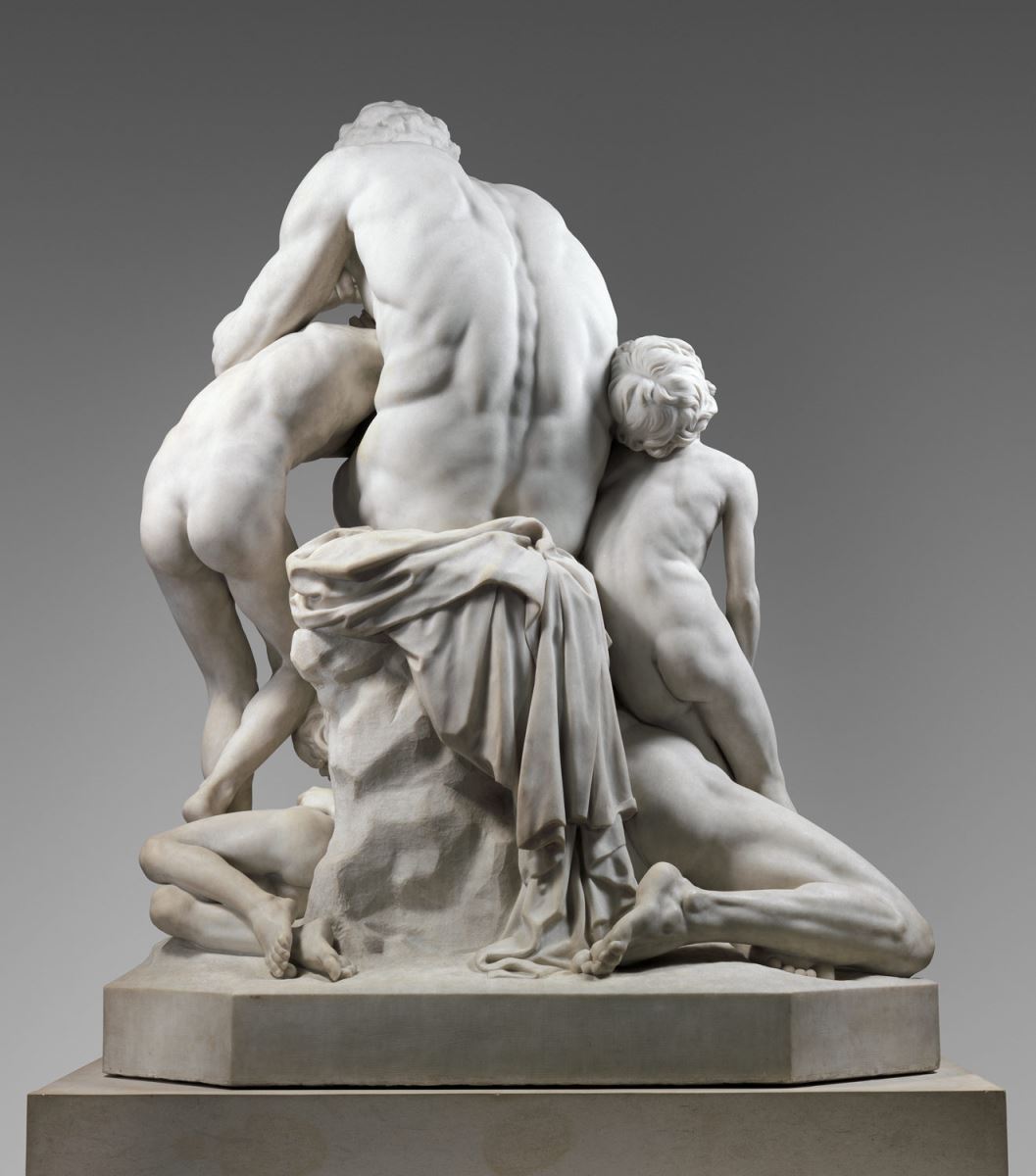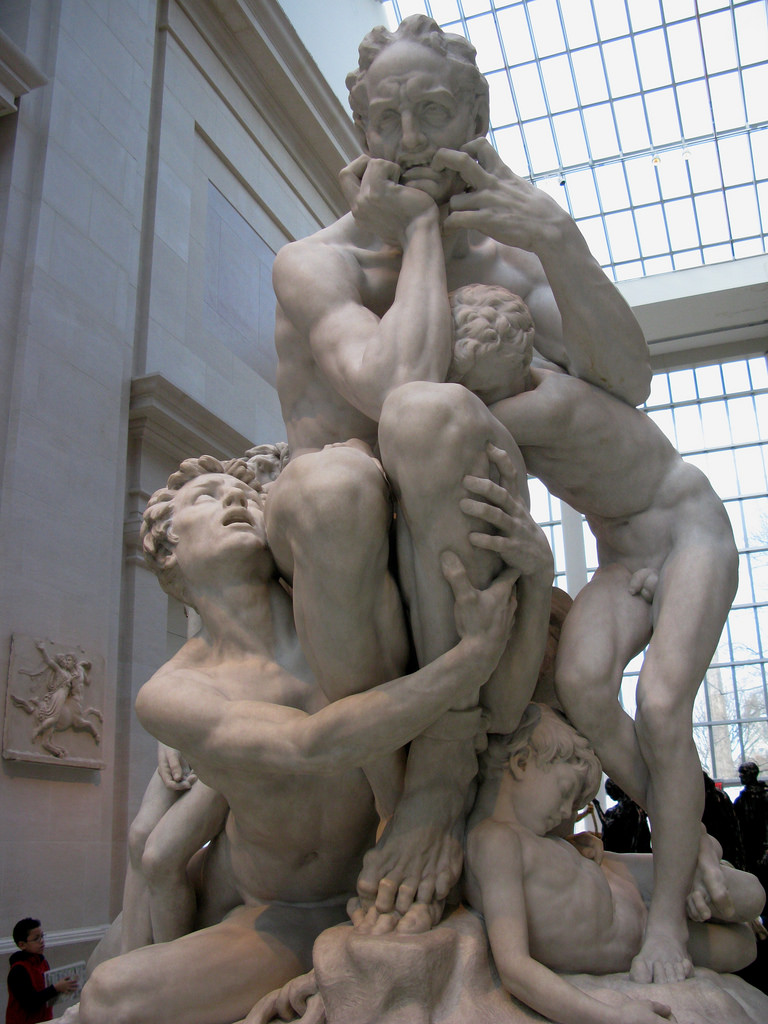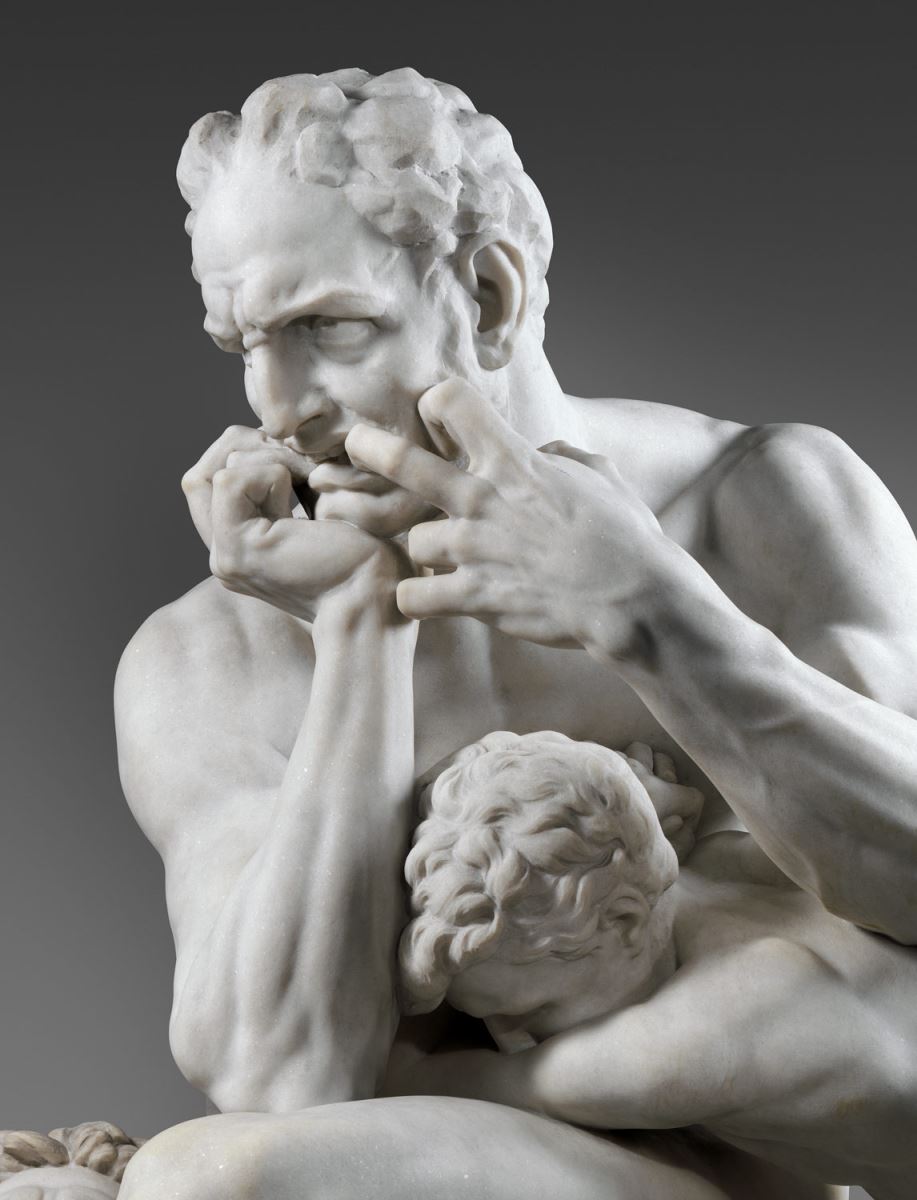.jpg)
The work is a highly expressive depiction of Ugolino della Gherardesca from Canto XXXIII of Dante's Inferno. In the story, the Pisan count Ugolino is sentenced to die in a tower prison with his children and grandchildren. Carpeaux shows Ugolino at the moment where he considers cannibalism. The work is emblematic of the Romantic style's heightened physical and emotional states. Ugolino looks into the distance. His posture ignores the four children that cling to his body as if he were unaware they were there—the youngest is curled at his feet and possibly dead. In the source text, Ugolino grieves the agonizing death of his children and whether he eats his children's flesh is unclear to the reader, as it is in the sculpture.Ugolino's body is muscular even though he is starving. Its style reflects the Vatican's Laocoön and His Sons.

Carpeaux won the Prix de Rome in 1854. While in Rome, he stayed in the French Academy in Rome's Villa Medici and studied the works of Michaelangelo. Carpeaux's Ugolino was prototyped on Michaelangelo's works from three centuries prior, particular his Last Judgment panel of the Sistine Chapel. The children's anatomy was based on naturalistic observation. He sketched dying children as part of his preparation. He was compositionally influenced by Laocoön and His Sons at the Vatican. Carpeaux completed the work in the last year of his residence at the French Academy in Rome.

The sculpture was cast in bronze in 1863 by the French Ministry of Fine Arts and displayed in the Parisian Tuileries to accompany a replica of Laocoön. A marble version was completed in Paris under Carpeaux's supervision for the owner of the Saint-Béat marble quarry to exhibit at the 1867 International Exposition. This version was later acquired by the Metropolitan Museum of Art in New York City.














